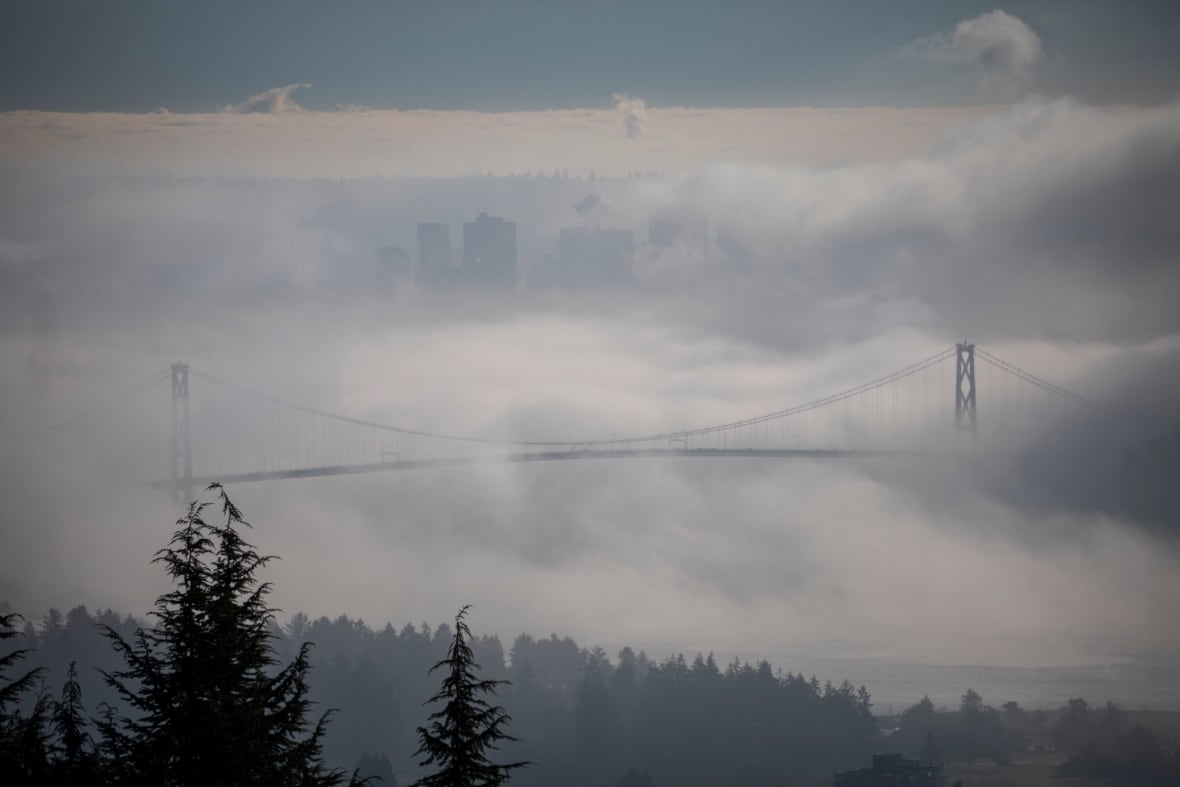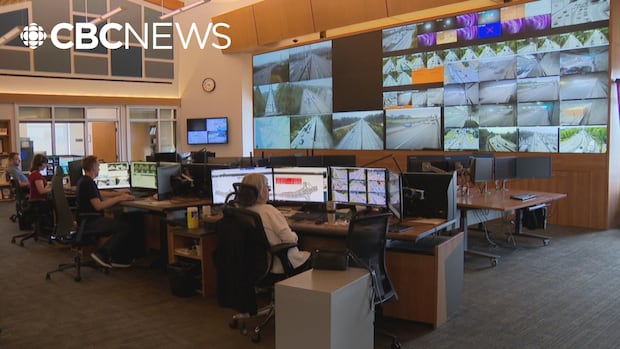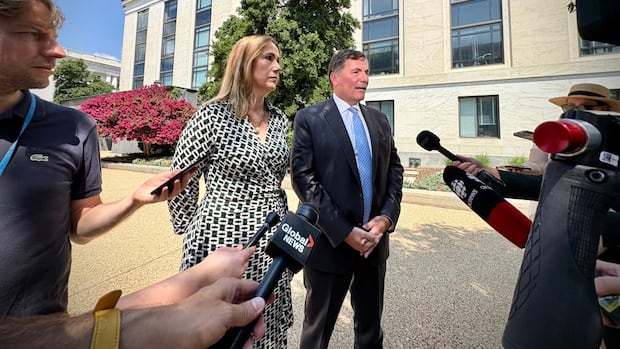[published_date]
Around 60,000 cars cross Vancouver’s Lions Gate Bridge every day.
And if you have ever been in one of those vehicles, you may have wondered who decides the ever-changing direction of the centre lane and how they decide when to change it.
“Our biggest goal obviously is safety and second to that is keeping traffic moving,” said Ashok Bhatti, executive director at B.C.’s transportation ministry.
The bridge, which connects Vancouver and the North Shore, has three lanes for vehicle traffic (and barriers that separate an area for cyclists and pedestrians on either side). Special traffic lights posted above each vehicle lane indicate which direction of traffic a lane is open to — providing the bridge with a counterflow system.
Staff monitor 46 cameras
At the province’s Transportation Management Centre in Coquitlam, B.C. the mood is calm and focused.
Staff monitor thousands of traffic cameras across B.C. They update the Drive B.C. website, change the messaging on electronic traffic signs across the province, and manage counterflow operations on various structures in Metro Vancouver—including the Lions Gate.
Around 60,000 cars cross Vancouver’s Lions Gate Bridge every day. And if you have ever been in one of those vehicles, you may have wondered who decides the ever-changing direction of the centre lane and how they decide when to change it. The CBC’s Michelle Gomez has the answers.
A staff member observes the iconic green bridge’s traffic at all hours through 46 cameras that show different sections and angles of both the bridge and the roads leading onto it.
Decisions are made methodically, based on engineering standards and take into account what is happening on the road in real time.
How it works
There are typically two lanes heading southbound—into downtown Vancouver—during morning rush hour as people pour into the city, and two lanes heading northbound—out of downtown—during evening rush hour,as drivers head home.
But it’s not as simple as that.
No matter the time of day, as cars come off the bridge they are routed onto city streets and highways, which must have enough space to handle them. The need is most acute for southbound vehicles, heading into Vancouver’s dense, downtown core.
“If we’re in a situation where we don’t do counterflow for a very long time, and traffic is starting to build up, say, in Vancouver. . . we need to start flushing this traffic through otherwise it will take hours for us to release it,” Bhatti said.
And if southbound traffic slows down too much along the Stanley Park Causeway, it can cause the centre lane to clog—which Bhatti said is a big no-no.
The centre lane, no matter which direction it’s serving, must remain free-flowing at all times so cars can merge, quickly, safely and on short notice, into the right-hand lane when an emergency vehicle needs to get across using the centre lane, Bhatti explained.
Emergency vehicles need to come through dozens of times per day, he added.
This adds to how often the centre lane is changed.
“The reason it’s so dynamic is we’re constantly managing the traffic back and forth so it won’t get to that critical place where it just won’t work,” he said.

When it isn’t rush hour, Bhatti said staff monitor the cameras and use the centre counterflow lane based on which side has the highest traffic volume.
“What we’re trying to do is make sure that it doesn’t get congested, particularly in any one direction,” he said.
Between managing emergency vehicles and traffic counterflow, Bhatti sayd staff typically switch the lane direction between 35 and 40 times a day.
How lanes are switched
The process of changing the direction of the centre lane using the specialised traffic lights takes about three minutes from start to finish.
Those driving in the centre lane will first see a flashing yellow line, then a solid yellow line, and finally a red “X” indicating the lane is fully closed. Drivers coming from the other side will then see the a green check mark above the centre lane, with staff monitoring the transition to ensure it’s clear before it opens to the opposite direction.
“It’s all done through very strict engineering standards, but the operators do have the ability… to dynamically shift things in real time to make sure it’s safe,” Bhatti said.
Constrained network
Bhatti said drivers should give themselves plenty of time and exercise patience while crossing the bridge, which he referred to as part of a constrained network.
“There’s a huge population of travellers within the Lower Mainland,” Bhatti said. “All the bridges could be bigger.”

Bhatti said drivers should know staff do their best efficiently and creatively manage traffic, using counterflow to make the most of the three-lane bridge.
“Everything we do is with the driver in mind.”




